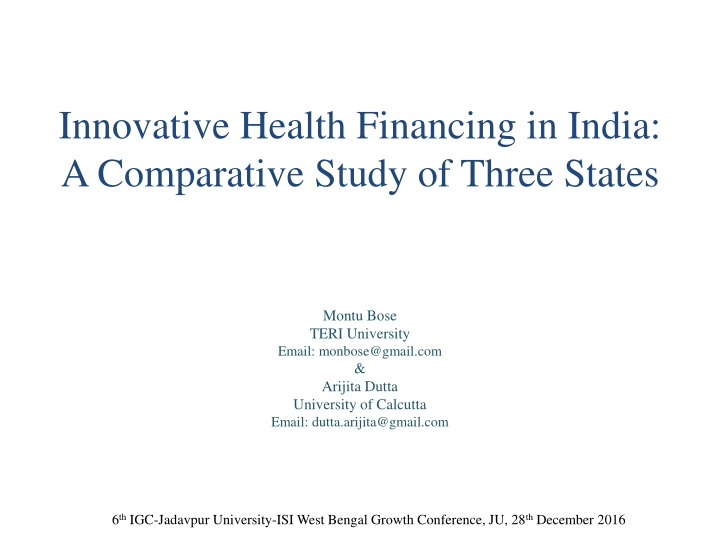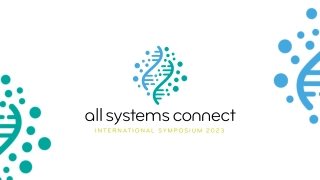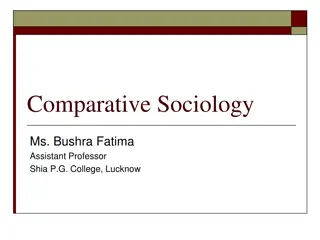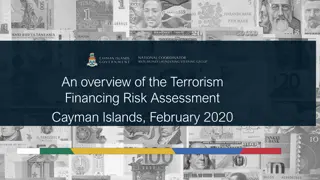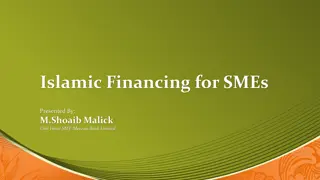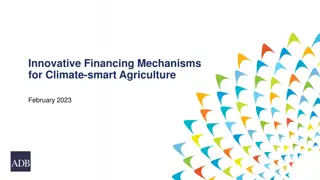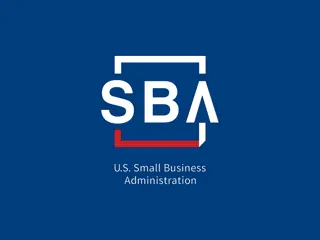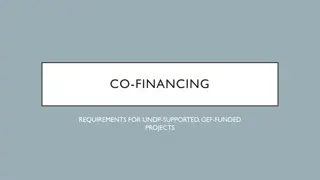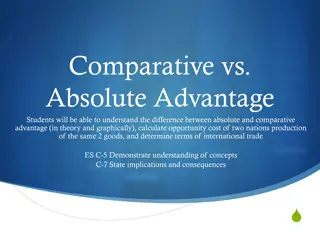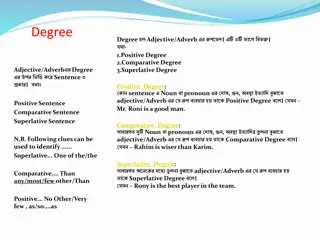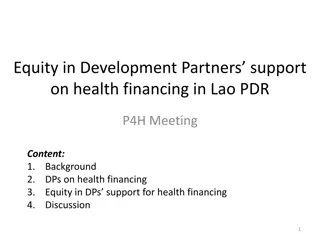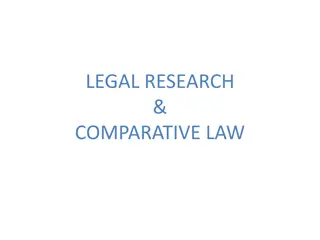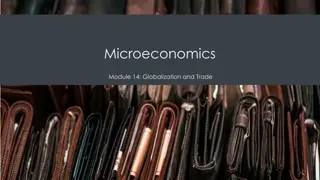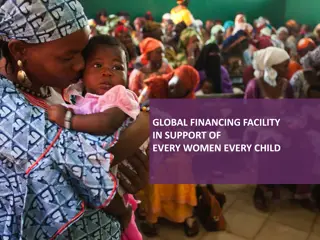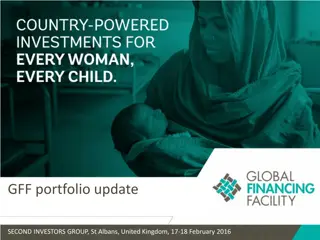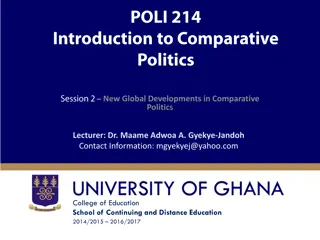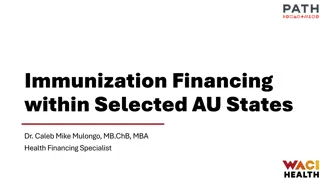Innovative Health Financing in India: A Comparative Study of Three States
This study delves into the innovative health financing strategies across three states in India, assessing public health spending, medicine distribution schemes, and equity in public in-patient care services. Through data analysis and exploration, the effectiveness and utilization patterns of these strategies are evaluated.
Download Presentation

Please find below an Image/Link to download the presentation.
The content on the website is provided AS IS for your information and personal use only. It may not be sold, licensed, or shared on other websites without obtaining consent from the author.If you encounter any issues during the download, it is possible that the publisher has removed the file from their server.
You are allowed to download the files provided on this website for personal or commercial use, subject to the condition that they are used lawfully. All files are the property of their respective owners.
The content on the website is provided AS IS for your information and personal use only. It may not be sold, licensed, or shared on other websites without obtaining consent from the author.
E N D
Presentation Transcript
Innovative Health Financing in India: A Comparative Study of Three States Montu Bose TERI University Email: monbose@gmail.com & Arijita Dutta University of Calcutta Email: dutta.arijita@gmail.com 6th IGC-Jadavpur University-ISI West Bengal Growth Conference, JU, 28th December 2016
Background Over the years, public health spending has been low NHA 2013-14: public spending on health is only 1.15% of GDP A large share of OOP expenditure in total health spending Medicine has the maximum share in total OOP spending 2
Contd NHM: strengthen the health system, universal access to affordable, equitable and quality health care RSBY (CMCHIS): financial protection against high OOP expenditure, improve the access to quality healthcare service Medicine: Tamil Nadu Medical Services Corporation (TNMSC), Rajasthan Medical Services Corporation (RMSC) & Fair Price Medicine Shop, West Bengal (FPMS) 3
Nature of the Medicine Distribution Schemes Similarities: All of them primarily aim to reduce OOPE on medicine and total OOPE Target to increase utilization of medical services Dissimilarities: TN & Rajasthan offers huge subsidies on medicine supply in public sector, while in FPMS, there is no financial burden on the government The former targets utilization only in public sector hospitals, while the latter has no such specifications. 4
Objectives Study the utilization pattern of public in-patient care facilities for the three states Examine the effectiveness of the strategies adopted by the states to arrest high OOP expenditure and Analyze the extent of equity in public in-patient care services in the states 5
Data National Sample Survey: NSS 71st round (2014) Social Consumption: Health NSS 60th round (2004) Morbidity & Health Care DDGs State Government (2015-16 Expenditure Budget Department of Health & Family Welfare) PIP NHM (2013-14) 6
Methodology Exploratory Data Analysis Benefit Incidence Analysis = = i ij ij j i i j = economic group (MPCE); i = service (in-patient care) Net subsidy: difference between private and public OOPE Private OOPE: modal OOPE for state, sector, MPCE, disease group, duration of stay 7
Subsidy Estimation: Budget & NHM Each expenditure head has been cross-classified for healthcare functions (HC) SHA 2011 Calculated the total public expenditure on IP care ( ) Modal OOPE in Private hospital ( smd) smd = smd x smd (no. of patients utilizing public facilities) The share ( smd/ smd) of each category has been weighted with to get the disease specific subsidy for each sector ( smd) 8
Results Utilization: Share of Public Sector in total Hospitalization of the States (in %) Sector Urban State Year Rural Combine 2004 40.2 36.2 38.8 TN 2014 45.4 32.6 38.9 2004 52.1 63.4 55.2 RAJ 2014 65.6 58.1 63.6 2004 78.6 65.6 74.3 WB 2014 77.5 55.1 70.4 9
MPCE Class wise Utilization Share of Public Facilities for Inpatient Care (in %) TN 2004 2014 P 22.30 35.28 LM 33.39 26.43 UM 26.08 23.73 R 18.23 14.56 P 47.63 49.42 LM 23.60 18.84 UM 21.51 22.77 R 7.26 8.96 P 30.52 41.34 LM 30.21 23.18 UM 24.60 23.32 R 14.67 12.16 RAJ WB Sector MPCE 2004 27.41 31.58 14.39 26.62 38.38 21.84 18.13 21.65 30.78 28.59 15.54 25.09 2014 37.51 21.30 22.72 18.47 35.94 32.52 19.38 12.16 37.14 23.99 21.92 16.95 2004 28.76 25.65 25.15 20.44 42.13 35.74 10.99 11.14 32.69 28.61 20.99 17.71 2014 28.45 22.80 27.03 21.73 33.56 32.87 23.50 10.06 29.72 25.29 26.16 18.84 Rural Urban Combine 10
Per-episode Out-of-pocket Expenditure during Hospitalization (in INR) 2004 2014 Service State Public Private Public Private TN 102.41 1125.90 150.16 3920.06 Medicine RAJ 1725.07 2228.25 1516.13 3451.26 WB 1326.12 1934.32 1916.52 2816.03 TN 1391.69 11766.71 450.85 19264.71 Medical RAJ 6212.58 10691.45 3628.62 22946.43 WB 3222.24 13715.03 5602.78 17951.06 Note: 2014 figures are converted into 2004 prices; Medical: Professional charges, medicine, diagnostic tests, bed charges, physiotherapy, blood, oxygen etc. 11
MPCE Class wise per-episode OOP Expenditure on Medicine in 2014 (in INR) TN RAJ WB MPCE Class Public Private Public Private Public Private P 3438.17 64.72 3937.05 1264.77 2766.55 3576.45 LM 72.12 5561.21 2132.33 3836.96 2551.06 2058.38 UM 320.19 3808.41 1641.08 4976.74 1718.48 2862.76 R 524.40 6978.39 3549.75 5602.23 5370.90 2356.55 All 196.87 5139.63 1987.81 4524.98 2530.77 3692.13 12
MPCE Class & Sector wise per-episode OOP Expenditure on Medicine at Public Hospital in 2014 (in INR) TN RAJ WB MPCE Rural Urban Rural Urban Rural Urban P 69.7 60.2 1234.0 1355.0 3749.0 2660.0 LM 60.8 91.7 2166.0 2085.0 2682.0 2373.0 UM 199.5 520.4 1332.0 5038.0 1430.0 2596.0 R 325.4 951.4 2721.0 6209.0 2336.0 2470.0 All 145.1 274.1 1741.0 3117.0 2533.0 2527.0 13
Why is it so? Access to free medicine and diagnostic tests have increased marginally in WB but still its very low compared to TN and RAJ Share of NCDs, Injury and disabilities have increased substantially among all income groups Majority of the patients rely on the public facilities for treatment of NCDs, Injury and disabilities Mismatch between actual need of the patients and EDL 14
MPCE Class wise Distribution of Public Subsidy (in %) TN 2004 2014 P 20.74 42.25 LM 36.71 26.58 UM 29.21 20.48 R 13.34 10.69 P 57.76 64.35 LM 18.98 11.01 UM 18.63 20.21 R 4.18 4.43 P 41.52 54.17 LM 26.87 18.18 UM 23.36 20.33 R 8.25 7.31 RAJ WB Sector MPCE 2004 19.28 35.72 16.22 28.78 28.12 15.69 11.30 44.89 25.35 21.98 12.84 39.83 2014 44.43 15.13 20.66 19.78 38.59 38.88 14.86 7.66 41.53 26.94 17.78 13.75 2004 22.36 25.96 29.30 22.38 41.01 40.53 6.19 12.27 30.50 32.32 19.21 17.96 2014 25.99 19.44 28.15 26.41 36.21 31.53 24.66 7.60 31.30 25.72 26.34 16.64 Rural Urban Combine 15
Cost of Healthcare in Public & Private Facilities (per hospitalization) 30000 27000 24000 21000 25258 18000 30085 15000 591 OOP Subsidy 12000 23536 9000 6000 7346 13132 4758 3000 932 704 0 Public Private Public Private Public Private WB RAJ TN 16
Conclusions Focused policies are required to increase public sector hospitalization by the poor in WB Procuring (or changing EDL) medicine according to need of the patients are urgently needed in WB Provision of other healthcare services would reduce the OOP burden on the household in WB TN should also focus on LM groups Focus on urban poor would give better health outcome to Rajasthan However, the question of fiscal space remains crucial. WB may not be in a position to attain this apparently first best policy and would be forced to settle down for alternative policy options. 17
Thank You 18
